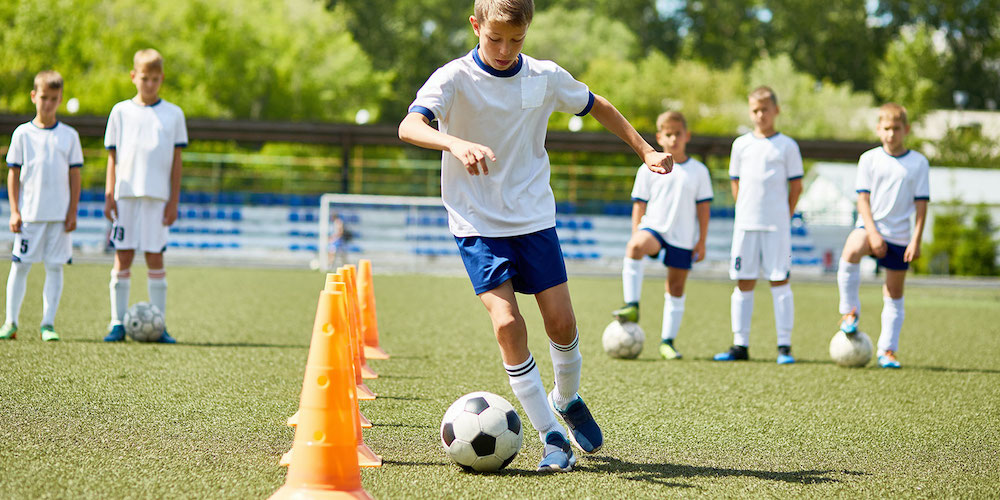Speed and Agility: Unlocking the Competitor in Your Young Soccer Player

Soccer players heavily rely on skills like speed and agility, as they are the essence of the game at every level. Soccer is all about outmaneuvering opponents with grace while making swift, decisive movements that can often turn the tide of the match. This guide is dedicated to understanding the pivotal role of speed and agility in soccer and exploring comprehensive strategies to cultivate these attributes in young players, ensuring they shine on the field with every move they make.
Understanding the Importance of Speed and Agility in Soccer
Speed and agility are the lifeblood of soccer, infusing the game with its thrilling pace and heart-stopping moments. Speed is the wind beneath a player’s wings, allowing them to dart past defenders, chase down the ball, and orchestrate swift, decisive attacks. Agility, meanwhile, is the dancer’s grace, the ability to pivot, dodge, and weave through the opposition with finesse and precision.
- The Role of Speed in Soccer: Speed transforms players into threats that defenders dread. It’s about explosive acceleration, the ability to sprint with the ball, and the relentless pursuit of victory. Speed is a player’s ally both in offense and defense, a skill that turns the game on its head, creating opportunities and thwarting the opposition’s advances.
- The Role of Agility in Soccer: Agility is the art of the unexpected. It’s about changing direction with the elegance of a ballet dancer, about maintaining balance and poise in the face of relentless pressure. Agility is the skill that makes players unpredictable, turning them into architects of ingenious plays and masters of evasion.
Basic Principles of Speed and Agility Training
Crafting a training program that enhances speed and agility involves understanding the science behind these skills and tailoring the approach to young athletes’ unique needs.
- The Science Behind Speed and Agility: Training for speed and agility is about more than just running fast or changing direction. It’s about developing muscle strength, power, and explosiveness. It’s about refining reaction times and honing the coordination that turns raw speed into effective gameplay.
- Age-Appropriate Training Guidelines: Young athletes are not miniature adults; their training needs are unique. Their programs should be age-appropriate, focusing on skill development and gradual progression rather than pushing them to their physical limits.
- The Importance of Proper Warm-Up: Every training session should begin with a proper warm-up. It’s the prologue to the main act, preparing the body and mind for the rigors of training. Dynamic stretching, light jogging, and sport-specific drills set the stage for a productive, injury-free training session.
Developing a Training Plan for Speed and Agility
Creating a training plan for speed and agility is about setting clear goals, designing balanced routines, and ensuring that every drill and exercise contributes to the young athlete’s growth and development.
- Setting Goals for Speed and Agility: Goals give direction to the training program. They transform abstract concepts like “improve speed” into tangible targets like “reduce sprint time by 0.5 seconds.” Clear, measurable goals are the milestones that guide young athletes on their journey to becoming faster and more agile.
- Creating a Balanced Training Schedule: Balance is key in any training program. It’s about harmonizing high-intensity drills with adequate rest, ensuring that young athletes’ bodies have the time to recover and grow stronger. A balanced schedule prevents burnout and keeps the flame of passion for the sport burning bright.
- Designing Speed Training Drills: Speed training is about more than just running; it’s about mastering the art of acceleration and learning to maintain speed over distances. Drills should be varied and challenging, pushing young athletes to their limits while ensuring they remain engaged and motivated.
- Implementing Agility Training Exercises: Agility training is about quick, precise movements. It’s about developing the ability to change direction on a dime, to maintain balance and control at all times. Agility drills should challenge young athletes’ coordination and proprioception, preparing them for the unpredictable nature of the game.
Nutrition and Recovery for Optimal Performance
In order for young athletes to achieve their desired level of speed and agility, training is only part of the equation. Nutrition and recovery play a big role in ensuring young athletes can perform at their best.
Proper nutrition fuels the body, providing the energy young athletes need to excel in training and on the field. A balanced diet, rich in carbohydrates, proteins, and healthy fats, ensures that they have the stamina to endure rigorous training sessions and recover quickly afterward.
Recovery, on the other hand, is the time when the body heals and grows stronger. Oftentimes parents and players alike believe that muscles are built on the field and in the gym. While, in reality, when they are recovering! This recovery period is an essential part of any training program, ensuring that young athletes’ bodies can withstand the demands of speed and agility training. Adequate rest, quality sleep, and proper post-training nutrition are the pillars of effective recovery.
Conclusion
Speed and agility in soccer are all about transforming young athletes into formidable players while instilling in them the skills they need to excel on the field. With the right training, nutrition, and recovery, young soccer players can unlock their full potential, turning every match into a display of their speed, agility, and unyielding passion for the game.

